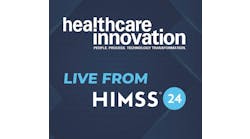When the COVID-19 outbreak hit, four pilots to implement automated electronic case reporting (eCR) to public health from EHRs as part of the Digital Bridge project were just wrapping up. The teams working on those pilots shifted gears to put together rapid cycle implementation processes to scale up eCR across more health systems. There now have been more than 142,000 COVID-19 electronic case reports transmitted to public health agencies since the onset of the pandemic.
Electronic case reporting is generally defined as the automated generation and transmission of case reports from EHRs to public health agencies for review and action. Goals include reducing clinician and staff burden and replacing legally required paper-based reporting, as well as getting information and feedback from public health back into patient’s chart.
During a recent AMIA webinar, informatics experts working on eCR technical and policy solutions described how they switched gears to ramp up implementation so quickly.
Steven Lane, M.D., M.P.H., clinical informatics director, privacy, information security & interoperability at Sutter Health and a clinical professor of family & community medicine at the University of California San Francisco, was involved in one of the four Digital Bridge pilots.
He said that in the Northern California region, there is a strong community of healthcare organizations involved in Epic interoperability Regional User Groups (RUGs). They put together rapid cycle implementation process for eCR and worked with Epic to develop an accelerated implementation plan for COVID-19 case reporting. “In California there are 41 organizations that use the Epic health record, 29 of us connected to eHealth Exchange and nine connected to Carequality, so this was a very ripe opportunity to leverage existing technology and legal agreements in place to move this forward quickly. What had previously taken two to three months was reduced to three to four days,” Lane said. “We have completed two cohorts of health systems in California go live and are now moving out of California and to a third.
Lane said the cohort built on its culture of cooperative collaboration and held daily meetings to address common progress and issues. “We are starting our third cohort now and a fourth is planned. We at Sutter Health were able to go live in three business days, which was pretty exciting. I don’t think anybody has beaten us yet.”
The other Digital Bridge pilot sites are all now live, including Intermountain, Houston Methodist, UC Davis, and the Institute for Family Health in New York.
Sutter Health went live April 15, followed closely by OCHIN, 19 states and Contra Costa Health Services.
Current implementation cohort members include:
• Washington Hospital Healthcare System (CA)
• UCLA (CA)
• MemorialCare (CA)
• Community Medical Center (CA)
• University Of Utah
• Group Health Cooperative of South Central Wisconsin (WI)
• PeaceHealth (WA)
• Northwest Permanente, PC (WA, OR)
• Memorial Healthcare System (FL)
• Novant Health (GA, NC, SC, VA)
Lane said future cohorts are forming now. He sees opportunities for further progress, including working with Epic to advance a nationwide approach to rapidly onboard all U.S healthcare organization customers instead of having to do this work in smaller cohorts.
They are also working with Carequality to finalize a new eCR Implementation Guide to allow participation by any provider organization that has signed on to use the national interoperability framework.
The informatics leaders working on this are working to encourage all EHR vendors to develop triggering and report-generation capabilities based on the Digital Bridge standard. (There is a FHIR-based system being designed to allow clinicians on any EHR to send in this data.) They also are encouraging all state and local health jurisdictions to accept eCR in lieu of manual case reporting.
John Loonsk, M.D., is a consulting chief medical informatics officer for the Association of Public Health Laboratories and an adjunct associate professor at the Johns Hopkins Bloomberg School of Public Health. He is leading the “eCR Now” effort to rapidly scale up case reporting to support COVID-19 and other outbreaks.
There is a recognition that eCR is operating well now for COVID-19, but there were a limited number of EHRs with eCR capabilities when the COVID-19 outbreak began, Loonsk explained. So they began work on a new “eCR Now” FHIR app that EHRs that are not eCR-enabled can rapidly implement to automate COVID-19 eCR. “We were in the midst of rolling out eCR and not all EHRs have added the technology to support the case reporting solution,” Loonsk said, “but the FHIR app is built on the API in FHIR out in the field now and can be implemented readily. We realized we could build on that API and provide a reporting app that could do COVID 19 reporting without EHR vendors having to upgrade their software.”
An initial version of eCR Now app for COVID-19 and the source code became available May 1 for EHR sandbox implementation and testing. They are encouraging EHR companies to test it in an HL7 FHIR Virtual Connectathon May 13-15.


